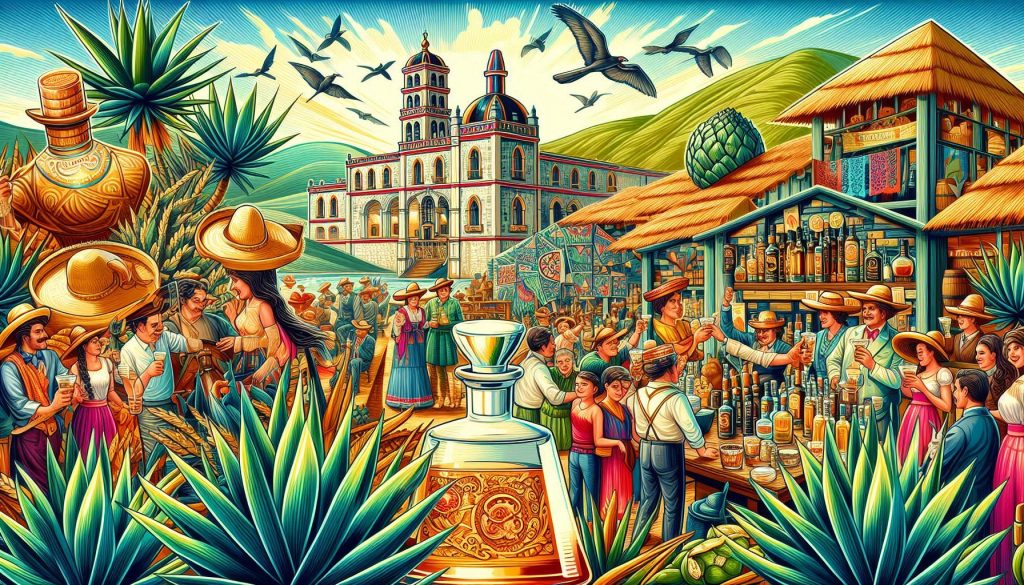The History of Tequila

The History of Tequila: A Drink with Deep Roots
Tequila, one of the world’s most iconic spirits, is much more than just a distilled beverage: it is a symbol of Mexican culture, a centuries-old tradition, and a legacy that has transcended borders. Its history is full of fascinating details that take us back to pre-Hispanic civilizations and guide us through centuries of evolution and perfection.
Pre-Hispanic Origins
The history of tequila begins long before the arrival of the Spanish in the Americas. Indigenous peoples in Mexico, such as the Aztecs, already knew and used the agave (or maguey, as they called it) to produce a fermented drink called pulque. Pulque was made by extracting aguamiel, a sweet liquid that flows from the heart of the agave plant after it is cut. This sacred beverage was consumed in religious ceremonies and associated with deities like Mayahuel, the goddess of maguey.
The Arrival of the Spaniards and Distillation
With the arrival of Spanish conquerors in the 16th century, the fermentation process of agave was combined with distillation techniques brought from Europe. The Spanish, having exhausted their brandy reserves, sought a way to produce alcoholic beverages in the New World. It was in this way that they began distilling fermented agave, giving birth to what we now know as mezcal. This rudimentary distillate was the precursor to tequila.
The Birth of Tequila
Tequila, as we know it today, has its roots in the region of Jalisco, specifically in the town of Tequila, which gave the drink its name. In the mid-16th century, the first distilleries were established in this area, where blue agave (Agave tequilana Weber) grew abundantly. This variety of agave, with its high sugar content, proved ideal for the production of a more refined and distinctive drink.
In the 17th century, the production of tequila began to industrialize, and families like the Cuervos and Sauzas played a key role in its development. José Antonio de Cuervo obtained the first royal license to produce tequila in 1758, while Cenobio Sauza established that blue agave was the only suitable variety for its production, laying the foundations for what is now a Denomination of Origin.
Denomination of Origin and Globalization
In 1974, tequila received its Denomination of Origin, which means it can only be produced in certain regions of Mexico, primarily in Jalisco and parts of Guanajuato, Michoacán, Nayarit, and Tamaulipas. This legal protection ensures that authentic tequila meets specific production and quality standards.
In the 20th century, tequila began to gain international popularity. Initially associated with parties and celebrations, over time its image evolved to be appreciated as a sophisticated and versatile drink. Today, there are different types of tequila, from blanco (unaged) to reposado (aged in oak barrels for a few months) and añejo (aged for more than a year), each with unique flavors and characteristics.
Tequila in Modern Culture
Tequila is not just a drink; it is a symbol of Mexican identity. It has inspired songs, movies, and works of art, and its consumption has become a ritual that ranges from the classic «tequila, salt, and lime» to the slow tasting of premium varieties. Furthermore, the tequila industry generates jobs and significantly contributes to the economy of Mexico.
Tequila Facts
- Agave takes years to mature: A blue agave plant takes between 7 and 10 years to reach the maturity needed for harvest.
- Tequila is a cultural heritage: In 2006, the agave landscape and ancient industrial facilities of Tequila, Jalisco, were declared a World Heritage Site by UNESCO.
- Not all agave distillates are tequila: Only those produced with blue agave in authorized regions can be called tequila. Other agave distillates are known as mezcal.
Tequila is much more than a beverage; it is a living story that connects the past with the present, and continues to evolve while maintaining its roots deeply embedded in the land and culture of Mexico. Cheers! 🥂🌵
| L | M | X | J | V | S | D |
|---|---|---|---|---|---|---|
| 1 | 2 | 3 | 4 | 5 | 6 | 7 |
| 8 | 9 | 10 | 11 | 12 | 13 | 14 |
| 15 | 16 | 17 | 18 | 19 | 20 | 21 |
| 22 | 23 | 24 | 25 | 26 | 27 | 28 |
| 29 | 30 | 31 | ||||